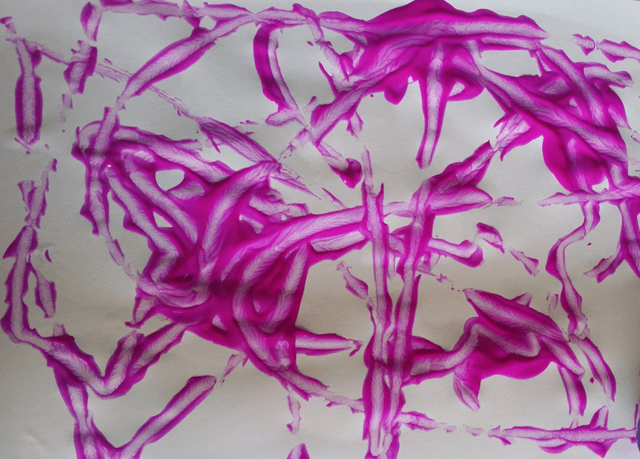Have you been to art therapy? Are you interested in releasing emotions without speaking? If so read on…
I patiently waited. This wasn’t the first time I had seen this play out, although with every client it’s always a bit different. That moment between the careless almost flippant scribble on the page and the blind side from unexpected insight.
It’s sometimes painful and it’s sometimes liberating. That ‘aha’ moment when the client realises the significance of what lies beneath the noise of social conditioning and labels.
As Paula slowed down and looked deeper, as we rotated her seemingly random shapes on the page, I could sense and see the shift. It’s subtle to begin with. I ask the question. ‘What happened for you then?”
She began to shake a little, holding back tears. I encouraged her, it’s ok, this is a safe space. Just breathe.
Slowly Paula looks at me through the tears which are now flowing freely. “I didn’t expect that she said.”
It’s a powerful moment and it’s in that split second of realisation that the true healing begins.
This is the power of Art Therapy. The ability to place outside of oneself a representation of an issue, an externalisation of feelings too hard to find words for, giving the gift of insight.
For me it is an absolute privilege and I see it as an honour to be present for such moments.
Language Is Not Everything
You see, language is limited. There are things we experience and feelings so confused or large that sometimes words fail. I know from my own experiences and from my observations of others that there are times when traditional therapy does not help.
This is where Art Therapy shines. When there are no words to express, it requires action to get the message across. How many times have you found yourself drawing shapes in the air with your hands when trying to get another person to understand?
Communication is reliant on more than words, we use gestures and imagery to enhance our story, and have done so for millennia. It’s not a new concept, it just that we have forgotten.
Western medicine and reliance on pharmaceutical intervention have caused a disconnect from our true feelings.
The medical model of western society is generally designed to do one of two things, or in some cases both. Firstly, suppression of symptoms is often the first line of action in an attempt to achieve a functional state.
The second is to modify your behaviour and teach you how to fit in and remain functional.
However, for many people who have experienced some extreme event, their perception, beliefs and needs have changed to such a degree that the old definition of functional no longer works for them.
We live in a world of economic functionality where we are labelled and categorised, given a set of values and rules to live by. As a result, most people are plagued with feelings of inadequacy and guilt.
So when faced with something that challenges those beliefs, it is extremely disturbing. It can result in all manner of psychological and physiological responses, which in turn leads to more labels and a need to suppress.
However, the root cause of dis-ease, is often dismissed, ignored or forgotten and as a result, not resolved.
This is where Art Therapy can be a wonderful alternative. It allows the alarm systems of the brain to be addressed and calmed, so that the whole brain can be engaged in problem solving.
“But I can’t do art for nuts, “ I hear you say.
What if I told you art therapy has nothing to do with the quality of the art. The art-making is simply a tool and the therapy is in the process.
Often the result doesn’t resemble a work of art at all, it can be a jumble, a mess, a goo, a sound, a movement, that is a representation only and gives an opportunity to explore new thoughts.
The art that happens in therapy could be moving paint around with the fingers or scribbling on a page or squeezing clay between hands or feet. It can be a whole body experience or a controlled and neat expression. There is no wrong way to do this.
The other thing that needs to be said, is an art Therapist is not there to judge, analyse or diagnose you from your art. They are a companion and support while you find your own insights and draw your own conclusions.
You are the expert of you.
Your therapist provides the space safety and opportunity for you. They will be there to encourage and assist. Not direct and prescribe.
As such, you are free to share as much or as little with words as you are comfortable with. There is no requirement to constantly re-traumatise through repeated telling and the frustration of inadequate words.
This is the difference between making art as a self soothing activity, (or art as therapy), and a session of Art Therapy facilitated by a qualified therapist.
It is generally accepted that art has inherent qualities conducive to wellbeing and this is not in dispute. It is my desire to help people like you dear reader, understand the difference and make an educated choice about whether Art Therapy is a good fit for you.
It is a modality suited to all ages and as a client centred approach, the therapy travels at a pace that works for the client.
It’s used in every circumstance where you would expect to see counselling at work. From small problems to large, including palliative care or depression, anxiety or mood disorders, or cognitive impairment.
It’s useful as a method of family conflict resolution and individual mental health care. It’s often seen as a great way to assist with not only the symptoms of PTSD and associated emotional regulation difficulties but can in fact be life changing.
So I ask you…. is it what you thought?
You can find much more information on living a holistic lifestyle in these free magazines and on our YouTube channel.
 Meri Griesbach is a Transpersonal Art Therapist in Seacliff, Australia and author of Creative Rebel. She is passionate about supporting people through their mental health journey and providing safe space to express and explore. She believes that we all have a hero within, and feels privileged and honoured when able to witness the emergence of people’s own healing power.
Meri Griesbach is a Transpersonal Art Therapist in Seacliff, Australia and author of Creative Rebel. She is passionate about supporting people through their mental health journey and providing safe space to express and explore. She believes that we all have a hero within, and feels privileged and honoured when able to witness the emergence of people’s own healing power.






